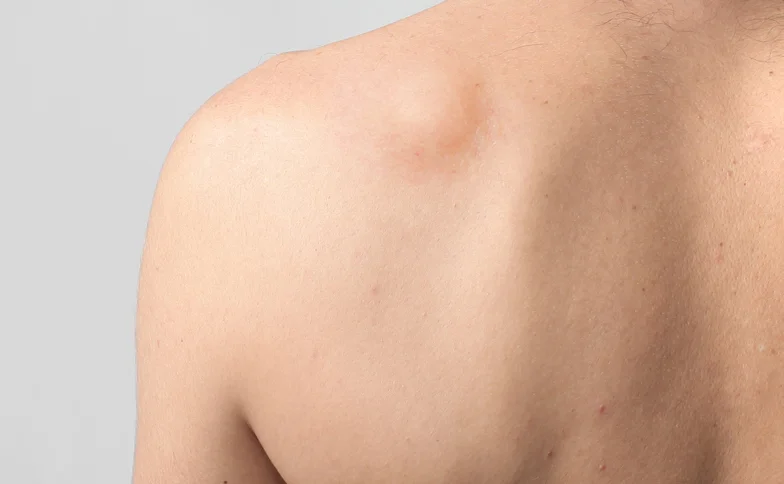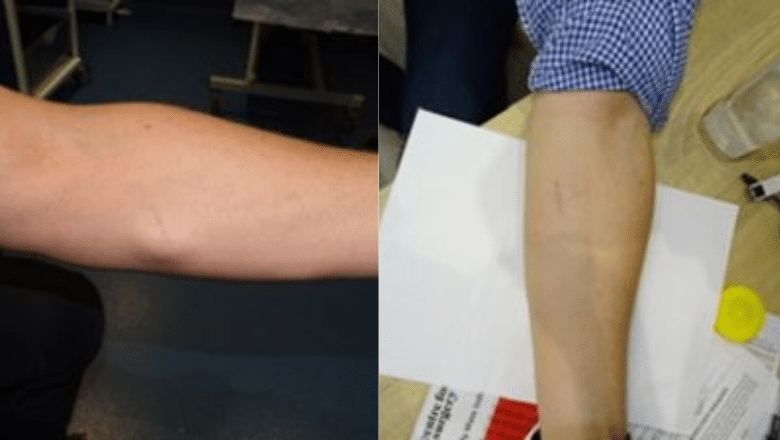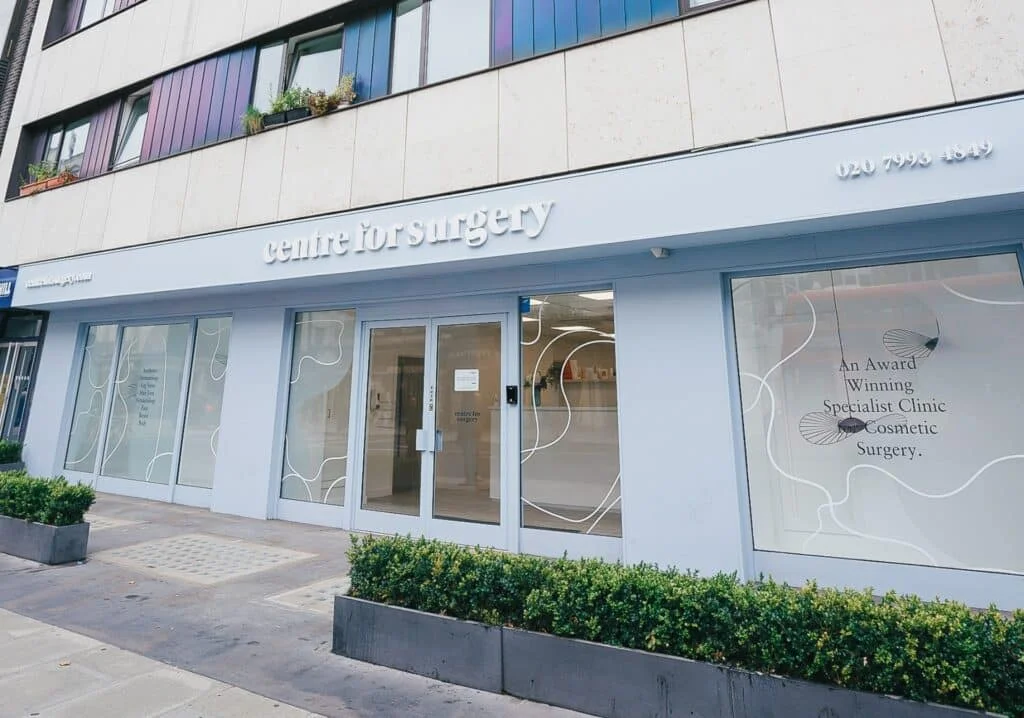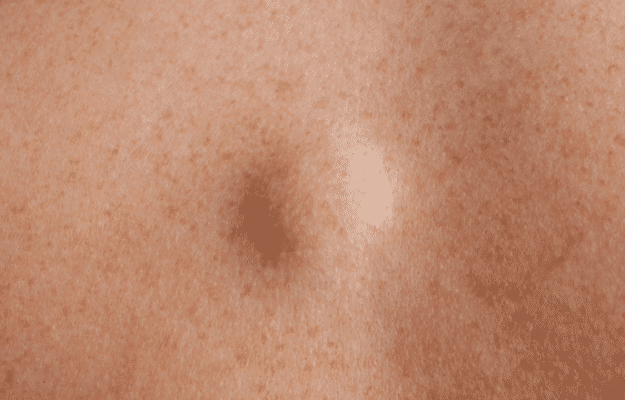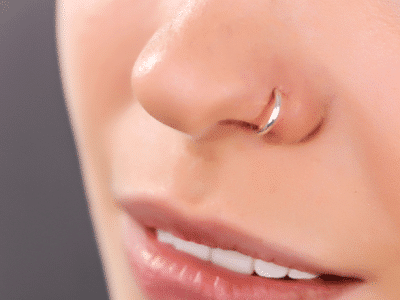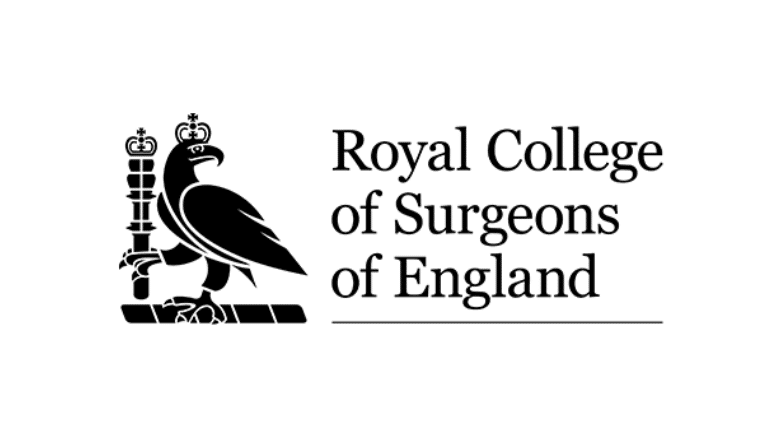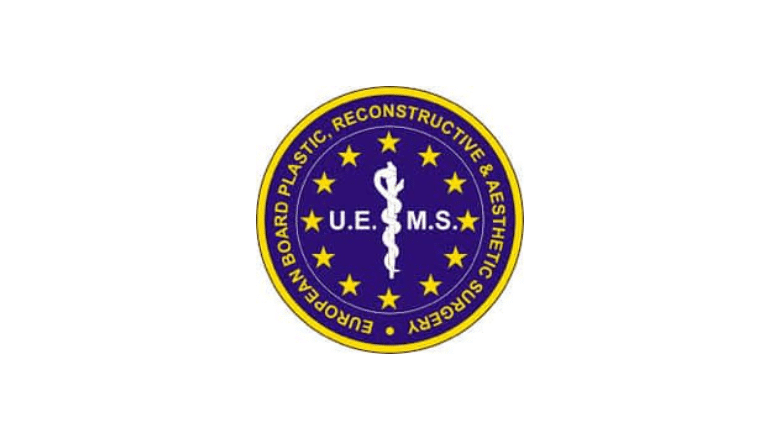Lipoma Removal Surgery: London & UK
Lipoma Surgery – Skin Lump Removal
A lipoma is a slow-growing, fatty lump situated between your skin and the underlying muscle layer. It is benign and rarely becomes cancerous. It’s usually detected by touch and its doughy feel often helps to differentiate it from other types of lumps. While they’re harmless, some people may choose to remove a lipoma due to discomfort or for aesthetic reasons.
At Centre for Surgery in London, our team of expert plastic surgeons are proficient in the surgical removal of lipomas. Their approach focuses on techniques that not only effectively remove these benign growths, but also minimise scarring, ensuring a satisfying cosmetic result. Our Baker Street clinic offers a broad range of skin surgeries including lipoma removal, in a comfortable and professional environment.
The surgical procedure to remove a lipoma typically involves either liposuction or surgical excision. Liposuction can be a preferable choice for larger lipomas, as it tends to leave a smaller scar. In an excision procedure, the surgeon makes an incision in the skin and removes the lipoma completely. Both procedures are usually done under local anaesthesia and involve minimal downtime for recovery.
Regardless of the method, our surgeons take utmost care to ensure the best possible outcome. Whether your lipoma is causing discomfort or you simply desire its removal for aesthetic reasons, Centre for Surgery is dedicated to providing you with a positive and successful treatment experience.
What is a Lipoma?
A lipoma is a benign growth of fat cells that aggregate under the skin, forming a soft, rubbery lump. It’s a common condition often described as a skin lump or a fatty tumor. Lipomas develop within the adipose tissue—the layer of fat that lies between the skin and the underlying muscles. They are encased within a thin, fibrous capsule and nourished by small blood vessels.
Although noncancerous and rarely life-threatening, lipomas can sometimes cause discomfort, especially if they press against nerves or restrict joint movement. If they grow too large or become visually noticeable, some people may also opt to have them removed for cosmetic reasons.
Lipomas can occur anywhere on the body where fat cells are present, but they are most commonly found in the:
- Back
- Shoulders and neck
- Buttocks and thighs
- Arms and legs
- Chest and abdomen
- Face and scalp
Our skilled surgeons at Centre for Surgery in London offer treatments for the removal of these skin lumps, ensuring a safe and efficient procedure with minimal scarring. Depending on the size and location of the lipoma, the surgeon may employ various surgical techniques such as liposuction or direct excision.
Liposuction involves the insertion of a small, thin tube called a cannula to break up the fatty tissue, which is then suctioned out. This approach is often used for larger lipomas and results in smaller scars.
In contrast, a lipoma excision procedure involves making a small incision over the lipoma and carefully removing the entire lump. This method is often preferred for smaller lipomas and for those located in easily visible areas to ensure optimal cosmetic results.
Regardless of the method chosen, our surgeons prioritise patient comfort, safety, and satisfaction, aiming to minimise the impact of the procedure on your day-to-day life.
What are the symptoms of a lipoma?
Lipomas typically present as soft, round or oval-shaped lumps underneath the skin. They can range in size from smaller than a pea to several centimeters in diameter. While lipomas can occur anywhere in the body, they are most commonly found on the neck, shoulders, back, abdomen, arms, and thighs.
One of the key characteristics of a lipoma is its “doughy” or “rubbery” texture. When pressed, it will typically yield to pressure and may even move slightly under the skin. It should be relatively easy to distinguish from the surrounding tissues due to its softer and smoother texture.
While lipomas are usually painless, they can sometimes cause discomfort or pain, especially if they grow large enough to press on nearby nerves or other structures. Some people may also experience a feeling of heaviness or a dull ache in the area of the lipoma.
Despite their often alarming appearance, lipomas are usually slow-growing and don’t pose a serious health risk. However, any sudden changes in the size, shape, or consistency of a lipoma, or the onset of pain, should prompt immediate medical attention.
Although most lipomas are solitary, some people may develop multiple lipomas at the same time. This condition, known as lipomatosis, can cause a more generalised thickening or lumpiness of the skin, particularly on the arms and legs.
Why do lipomas form?
Lipomas are common benign tumours of adipose tissue, but the exact reasons why they form are not completely understood. They are thought to result from an overgrowth of fat cells in a localised body area, but what triggers this overgrowth is unclear.
Genetic Factors
Lipomas often run in families, suggesting that there may be a genetic component to their development. Some genetic conditions, such as familial multiple lipomatosis, Gardner syndrome, and Madelung disease, are associated with an increased risk of developing lipomas.
Trauma
Some research suggests that trauma or injury to a specific area can lead to the formation of a lipoma. The theory is that the trauma may trigger the overgrowth of fat cells which results in a lipoma. However, this theory has not been definitively proven and is still under investigation.
Hormonal influences
Some studies have suggested that hormones could play a role in lipoma development. It has been observed that certain lipomas may grow during pregnancy or under the influence of hormones, suggesting a possible link.
Obesity and diet
While lipomas can occur in people of all body types, there appears to be a higher prevalence of lipomas in individuals who are overweight or obese. This could be due to the fact that lipomas are composed of fat cells, and increased body fat could contribute to their formation. The role of diet in lipoma formation is not clear, but a diet high in fats may potentially contribute to their development.
Despite these theories, it’s important to note that anyone can develop a lipoma at any time, and having one or more of these risk factors does not necessarily mean that a person will develop a lipoma. Further research is needed to understand the causes and risk factors for lipoma development fully.
What are the different types of lipomas?
Lipomas, which are non-cancerous lumps of fatty tissue, come in several types. Although all types can be removed through surgery, the specific variety of lipoma is usually determined during the operation or through microscopic examination, as they all generally look and feel the same from the outside. Here are the different types:
Conventional lipomas
These are the most frequently seen types. They’re made up of standard fat cells, just like the ones you’d find elsewhere in your body.
Angiolipomas
This kind is a combination of fatty tissue and blood vessels. Despite being benign, they are often tender or painful.
Fibrolipomas
These are composed of both fat cells and fibrous tissue. They’re essentially a mixture of conventional lipomas and fibrous tissue.
Hibernomas
These unusual lipomas are made up of brown fat, which is a specific type of fat that the body uses to keep warm.
Myelolipomas
This rare variety of lipoma is interesting because it contains blood cell-producing stem cells.
Spindle cell lipomas
This kind gets its name from the long, spindle-shaped fat cells it’s made up of.
Pleomorphic lipomas
These are categorised by the varied sizes and shapes of their fat cells, hence the term ‘pleomorphic’, which means many-formed.
Keep in mind, even if you have a lump that feels like a lipoma, you should get it checked by a plastic surgeon at Centre for Surgery to make sure it isn’t something more serious.
When should I remove a lipoma?
A lipoma, a non-cancerous growth of fatty tissue, doesn’t typically pose a significant health risk and rarely transforms into a cancerous growth. However, there might be several reasons why you’d consider having a lipoma removed:
Aesthetic considerations
If a lipoma grows to a considerable size (called giant lipomas) or is located in a visible area such as your neck, face, or arms, it could affect your appearance, and thus, you might opt for surgical removal.
Discomfort or pain
Although lipomas are generally painless, they can sometimes exert pressure on surrounding tissues as they grow, causing discomfort or pain. If a lipoma is causing you pain, it would be a good reason to consider having it surgically removed.
Unusual changes
If a lipoma starts growing rapidly, becomes painful suddenly, or shows signs of inflammation (redness, swelling, warmth), it may need to be investigated further. These changes could indicate complications or a different type of growth, and surgical removal might be recommended for diagnostic purposes.
The surgical technique used to remove a lipoma largely depends on its size and location.
Preparation for Your Lipoma Surgery at the Centre for Surgery
First Consultation at Centre for Surgery
The diagnosis of a lipoma is often based on physical appearance and characteristics, requiring only a physical examination by one of our surgeons. Additional medical tests are typically unnecessary unless the lipoma is situated deeply beneath the skin. In such cases, radiological imaging, such as a CT or MRI scan, may be needed.
Once a diagnosis is confirmed, you will discuss the treatment options with your surgeon to decide if lipoma liposuction or excision surgery is the most suitable option for you.
The Day of Lipoma Surgery
Lipoma removal is generally a day case procedure, meaning you can typically go home on the same day as your surgery. However, if your lipoma is located in a sensitive area, you may need to stay longer for monitoring. Most patients can return home a few hours after their surgery.
Before the operation, your surgeon will advise you on any necessary alterations to your medication regimen, such as temporarily discontinuing any blood-thinning medications. Fasting from food and drink the night before your procedure is also typically required if you have general anaesthesia or IV sedation.
Following your lipoma excision surgery, a friend or family member must be available to take you home, as the lingering effects of sedation may prevent you from driving.
What are the treatment options for lipomas?
If you’ve decided to have your lipoma removed, there are two main treatment options available to you, which our surgeons will help you navigate: lipoma excision surgery and liposuction.
Lipoma Excision Surgery
The most common method for removing a lipoma is through surgical excision. In this procedure, a surgeon makes an incision in the skin covering the lipoma, then carefully separates the fatty tissue from the surrounding tissues and muscles. The aim is to remove the lipoma in one piece, a process known as ‘en bloc’ removal.
Once the lipoma has been excised, the cavity is closed, and the edges of the skin are stitched together. If the lipoma is large, resulting in excess skin, this surplus skin will be trimmed away to optimise the cosmetic result.
Depending on the size and location of your lipoma, this procedure can be performed under local or general anaesthesia. Larger lipomas, deep-seated lipomas, or those in more difficult locations such as the face or neck typically require general anaesthesia. Smaller lipomas in more accessible locations can be removed under local anaesthesia.
The recurrence rate after surgical excision of a lipoma is low, estimated to be around 1-2%. However, if a lipoma does recur, surgical removal may need to be performed again.
Liposuction
Though less commonly used for lipoma treatment compared to surgical excision, liposuction is another option. This technique involves the use of a liposuction probe, a thin metal tube, which sucks out the fatty tissue of the lipoma through a small puncture in the skin.
The key advantage of liposuction for lipoma removal is that it results in less scarring, as the probe is introduced through a tiny puncture wound. However, liposuction is generally considered less successful than surgical excision in terms of achieving complete removal of the lipoma, and the recurrence rate is thought to be higher.
Some surgeons may combine the two techniques, using liposuction to reduce the size of the tumour initially, then introducing surgical instruments through the liposuction incision to remove any remaining fatty tissue. This method aims to achieve the thoroughness of surgical excision with the reduced scarring of liposuction.
Recovery After Lipoma Surgery
The complete healing and recovery period following lipoma excision surgery typically spans around 3-4 weeks. However, this time frame can vary depending on the size and location of the lipoma.
Lipomas that are larger, situated deeply under the skin, or located in more inconvenient places, such as the inner thigh or hand, may require a longer recovery period.
In most instances, you should be able to return to work within 1-2 days following lipoma removal surgery. However, it’s advised that you abstain from engaging in sports or any strenuous physical activity for the first two weeks after the operation. This precaution is particularly important if your lipoma is located on your legs or feet to prevent any trauma and promote optimal healing.
Potential risks and complications of lipoma removal
As with any surgical procedure, lipoma removal surgery may also carry certain risks and potential complications. These can include:
Wound Dehiscence
This is when the stitches holding the wound together break apart and the wound reopens. Although quite rare, this is more likely to occur if the removed lipoma is large, leaving behind a significant cavity after its removal.
Wound Infection
As with any surgery, there is a risk of bacterial infections. Signs of infection include redness, pain, swelling, and the drainage of pus. Such infections are usually treated with antibiotics.
Scarring
Depending on the size and location of your lipoma, a noticeable scar may form after the surgery.
Seroma and Haematoma
These are technical terms for a collection of fluid (seroma) and blood (haematoma) in the cavity where the lipoma used to be. These are not uncommon occurrences after lipoma excision, and they are typically addressed by draining the fluid or blood surgically.
Despite these potential complications, it’s important to note that lipoma surgery is considered to be one of the safest surgical procedures with relatively low risks. Serious complications are rare.
Lipoma Removal Before and After Photos
Lipoma Removal Surgery at Centre for Surgery: A Premier Choice for Safe and Effective Treatment
Centre for Surgery offers an unparalleled level of care and expertise. Our clinic specialises in a wide range of surgical procedures, including the safe and effective removal of lipomas. We are committed to providing our patients with the highest standard of care in a comfortable and professional environment. Our state-of-the-art facilities, combined with our team of highly skilled and experienced surgeons, ensure the best possible outcomes for our patients.
Our approach is patient-centred, ensuring that each individual receives personalised care tailored to their specific needs and goals. We understand that undergoing surgery can be a significant decision, which is why we strive to offer comprehensive support throughout the entire process – from initial consultation to post-operative care.
Patient Testimonials:
- Emma’s Experience: “Choosing Centre for Surgery for my lipoma removal was the best decision I could have made. The team was incredibly supportive, and the care I received was beyond my expectations. My recovery was smooth, and the results are fantastic. I couldn’t be happier with my choice.”
- Michael’s Journey: “From the first consultation, I knew I was in good hands at Centre for Surgery. The staff made me feel completely at ease, and the surgery went perfectly. My healing process was swift, thanks to the excellent post-operative care. I highly recommend Centre for Surgery to anyone considering lipoma removal.”
- Sophie’s Story: “The professionalism and kindness shown by everyone at Centre for Surgery were remarkable. They took the time to answer all my questions and made sure I felt comfortable throughout my lipoma removal process. The outcome has been life-changing. A huge thank you to the entire team!”
Contact Details for Booking a Consultation:
- Phone: 0207 993 4849
- Email: contact@centreforsurgery.com
- Address: 95-97 Baker Street, London W1U 6RN
For more information about our services and to book a consultation, please visit our About Us page.
Finance Options:
Understanding the financial aspect of surgery is crucial, which is why Centre for Surgery offers a variety of finance options, including 0% APR with Chrysalis Finance. This makes the decision to proceed with your lipoma removal surgery both accessible and manageable.
Further Information:
For those seeking more in-depth information about lipoma removal or other plastic surgery procedures, our plastic surgery blog offers a wealth of resources. Additionally, our clinic FAQs provide answers to common questions and concerns, helping to prepare our patients for their surgical journey.
Visit Our Baker Street Clinic:
Our Baker Street clinic in London is designed to offer a welcoming and safe environment for all our patients. Detailed information about our facilities and how to prepare for your visit can be found on our Baker Street clinic page.
Choosing Centre for Surgery for your lipoma removal surgery means opting for excellence in care, expertise, and patient satisfaction. Contact us today to embark on your journey towards a healthier, more confident you.
FAQs
-
What are lipomas?Lipomas are benign tumours affecting the soft tissue beneath the skin. They commonly grow to form soft well circumscribed fatty lumps and these fatty lumps can significantly grow sometimes as large as a tennis ball on some occasions.
Lipomas occur in all age groups in both men and women though they most commonly develop in middle-aged adults. The exact cause of lipomas are still unknown.
Commonly people are not aware that they have a lipoma until it grows sufficiently large enough to become either visible or can be felt. In many cases these soft tissue lumps become a cosmetic nuisance for many affected people. Fortunately they can be very effectively treated with a minor surgical procedure involving a small incision made in the skin. Following removal of the lipoma it will be sent for histology analysis to confirm that the lipoma is benign in nature. -
Why do people have lipoma removal?Lipoma removal is a commonly performed procedure at Centre for Surgery by our expert surgeons. Lipoma is a soft, fatty lump that grows beneath the skin caused by an overgrowth of fat cells. The vast majority of lipomas are benign (not cancerous) and amenable to surgical removal. They usually aren’t painful and are soft to the touch. These are not to be confused with osteomas, which are hard bony lumps often found on the forehead.
The unsightly nature of many lipomas leads many people to consider having them removed. Less common reasons include functional disturbance, such as when the lipoma catches on clothing, leading to discomfort. -
What are the cause of lipomas?Lipomas are due to a localised over proliferation of fat cells. The internal structure of a lipoma is made up of fat cells arranged in an enlarged configuration surrounded by a fibrous capsule. Lipomas tend to develop over time as our bodies develop a number of blemishes, lumps and bumps.
Some lipomas will resolve on their own but many will persist. There is thought to be a genetic link with the formation of some types of lipomas. -
What is a lipoma made of?Lipomas are made up of fat cells, or adipose tissue. They can also sometimes contain blood vessels and fibrous tissue.
-
Are lipomas genetic?Lipoma form as softened well circumscribed lesions beneath the skin as we age and although the cause is unclear in many cases, there is thought to be a genetic link. Genetic suscepticilbility is related to the genes which we all carry as serve as our internal genetic code which gives rise to our physical charactistics. In some cases the genetic code can develop aberrations and these can give rise to the proliferation of various growths of which lipomas are just one. More serious errors in the genetic code could give rise to cancerous changes. Lipomas are well known to be benign growths with no serious health risks from their development.
-
What is the difference between lipomas and cysts?Lipomas and sebaceous cysts are very common skin "lumps and bumps" and are amenable to surgical removal. A sebaceous cyst is a fluid-filled sac beneath the skin that contains cloudy fluid and can easily mimic the appearance of a lipoma. Cyst removal is another commonly performed procedure at Centre for Surgery. There are, however a number of key differences which help to distinguish between the two:
Lipomas are located deeper beneath the skin, whereas cysts are more superficial and often tethered to the skin.
Lipomas are soft to the tough with a doughy-like consistency. Cysts are firm and sometimes hard to the touch.
Sebaceous cysts can become inflamed and infected with a punctum (opening) overlying the cyst. Lipomas do not get infected and, therefore, do not have redness or swelling of the skin overlying the lipoma.
You should consult your GP if you develop any lump or swelling of any part of your skin surface. Your GP will be able to assess you and determine whether the lump is a lipoma. Your GP may recommend an ultrasound or a biopsy to investigate the lump further.
A diagnostic ultrasound scan can easily differentiate between lipomas and sebaceous cysts. Lipomas larger than 5cm, actively growing or painful, will require an ultrasound scan to rule out any sinister features. Your GP can arrange this or alternatively, a surgeon at Centre for Surgery can privately request an ultrasound scan. You can then decide if you want to proceed with lipoma removal at Centre for Surgery in London. The NHS does usually not perform lipoma removal.
Features of lipoma that require further investigation:
• is getting bigger
• is painful
• feels hard
• grows back after it’s been surgically removed -
Where do lipomas most commonly develop?Lipomas most commonly form where there are fatty deposits present in a part of the body. Lipomas are most commonly located on the thighs, buttocks, arms, chest and shoulders.
-
Who is the best person to remove a lipoma?A plastic surgeon is generally the best choice for removing a lipoma. Unlike other surgeons, plastic surgeons are highly skilled in specific cosmetic techniques that allow them to achieve the best possible cosmetic result.
-
Are lipomas common?Lipomas are a very commonly found skin lesion and range in size significantly. They can be as small as 0.5cm across and can be as large 3-5cm across. Lipomas that are allowed to grow without intervention can reach sizes as large as 10-15cm.
Lipomas are soft to the touch and often have a degree of mobility beneath the skin especially when moved between an overlying finger and thumb. They have a rubbery consistency. -
Can a lipoma burst?No, a lipoma can't burst on its own. It's made up of fatty tissue that sticks to itself and the tissue around it. While a lipoma can grow, it won't burst. It's also not something you should try to pop at home.
-
Are lipomas painful?Most lipomas are painless and develop slowly over a period no time. Many lipomas do not change in size even after many years.
Some patients may develop discomfort from lipomas after they have been present for a number of years when they have often grown in size. In a small number of cases, certain types of lipomas develop within body cavities including the chest and abdomen. These deep lipomas may result in compression of important blood vessels and other vital internal structures which necessitate their urgent surgical removal. -
Why do lipomas get removed?Most lipomas are removed because they are a cosmetic nuisance. Once a lipoma is formed it does not go away spontaneously regardless of how long it has been present.
In common with other types of lumps and bumps, many patients may find the presence of lipomas to be unsightly or there is a functional limitation such as being caught on items of clothing.
The surgical removal of a lipomatous is a straightforward procedure and the recovery time is very minimal which means you will be able to return to your activities of daily living almost immediately. There will however be a dressing to cover the lipoma removal site for the first week after treatment as it heals. You will see one of the post-operative nurses for a dressing check at 10 days after treatment.
The degree of scarring that develops after lipoma removal is minimal and this is usually significantly outweighed by the improvement in self-confidence as a result of lipoma removal. -
How are lipomas removed?Lipoma removal is commonly performed under a local anaesthetic as an outpatient procedure. The procedure takes about 30-90 minutes, depending on the size and complexity of the lipoma. Sometimes, your surgeon may recommend removal under general anaesthetic for optimum comfort. Local anaesthetic is carefully injected around the lipoma to render it fully numb before precise surgical removal.
There are two recognised methods of lipoma removal and our surgeons are trained in both techniques:
Surgical excision
Liposuction
The open surgical excision method is the most commonly used method of lipoma removal as it results in complete lipoma removal with the surgeon being able to directly visualise the lump during the lipoma removal procedure. An elliptical incision is performed in the skin around the lipoma, followed by gently expressing the lipoma out of the incision using simple finger squeezing. The lipoma is then surgically removed before closure with sutures. The removed specimen is always sent for histology analysis to rule out any cancerous changes.
Liposuction using microcannulas is a minimally invasive method of lipoma removal, which results in less scarring compared with the traditional open method of lipoma removal. There is, however, a slightly higher risk of recurrence compared with the open method. -
Is there a non-surgical alternative for lipoma removal?The only effective and permanent way to remove a lipoma is with a surgical procedure.
There are a number of nonsurgical treatments for reducing the size of lipomas but our dermatologists at Centre for Surgery do not recommend any of these treatments as there is no evidence to back their effectiveness.
Examples of non-surgical lipoma removal treatments:
- Honey
- Green tea
- Turmeric
- Flaxseed oil
And many other ineffective non-surgical lipoma removal treatments. We would strongly advise to stay clear of such treatments. -
Can lipomas be prevented?Lipomas generally develop gradually over a period of time and is related to the presence of underlying fatty tissue as a source of lipoma formation. Given this, it is therefore not possible to prevent the formation of lipoma .
One of the factors that may increase the risk of developing lipomas includes having a higher body mass index. Those who are overweight or obese may be more likely to develop lipomas and these are more likely to be multiple in nature. -
What size does a lipoma need to be before it should be removed?There's no particular size that a lipoma needs to reach before it can be removed. If your lipoma is causing you discomfort or pain, or if you're unhappy with the way it looks, it can be removed.
-
What is the best treatment for lipoma removal?The gold standard treatment for lipoma removal is with surgical excision. The lipoma removal procedure involves a small incision over the greatest prominence of the lipoma followed by gently teasing out the lipoma with finger pressure. Even lipomas that are more deeply situated can still be removed very effectively with only a small minimal access incision. The vast majority of lipoma removals take place under a local anaesthetic.
There are a number of different types of lipomas including angiolipoma which is related to blood vessels. Other types of lipoma may be harder in consistency and located in challenging areas and it may not be possible to entirely remove these. -
How long does it take to perform lipoma surgery?The duration of a lipoma surgery really depends on the size and location of your lipoma. Smaller lipomas that are easy to get to (like those on the forearm) can sometimes be removed in as little as 20 minutes. On the other hand, removing larger lipomas or those that are located deep within the body can take up to 2 hours or even longer, since the surgeon will need to remove a significant amount of tissue and then reconstruct the area.
-
How much does lipoma surgery hurt?Lipoma surgery isn't typically very painful. During the procedure, you'll be under anaesthesia so you won't feel anything. After the surgery, any mild discomfort can usually be managed with painkillers.
-
Can very large lipomas be removed?Centre for Surgery have access to the full range of treatments for lipoma removal. For patients with very large lipomas, our surgeons can use liposuction for a minimally invasive treatment with minimal incisions. The disadvantage of using liposuction is that it can be difficult to obtain a satisfactory tissue sample to send for histology analysis.
As part of good medical practice, it is important where clinically indicated, to take a tissue specimen to be sure that the lipoma is not something more serious.
A downside of using liposuction for lipoma removal is the risk of leaving residual tissue behind, and this could then lead to future recurrence of the lipoma. -
Do lipomas return after surgical removal?In some cases of incomplete surgical removal, it is possible for a lipoma to recur. Although this is more common with a liposuction technique, it can still occur with surgical excision.
It is important to distinguish potential recurrence of a lipoma from the development of a new lipoma in nearby surrounding tissue. -
What are the anaesthetic options for lipoma removal at Centre for Surgery?The vast majority of lipomas can be removed by a dermatologist under local anaesthetic as an outpatient.
For very large lipomas or complex recurrent lipomas in sensitive areas, you may be seen by one of our plastic surgeons for treatment under local anaesthetic combined with sedation or a general anaesthetic. -
Will I be put to sleep for lipoma removal?Whether or not you'll be put to sleep for lipoma removal depends on the size and location of your lipoma. If you have a large lipoma or one that's hard to access, you'll likely be given general anaesthesia.
-
How long is the recovery period after lipoma removal?Recovery from lipoma surgery is generally quite quick. Most people are able to return to work within 1 to 3 days. If you've had a larger lipoma or one in a tricky location (such as the foot) removed, you might need to stay at home for a bit longer. Overall, it usually takes about 3 to 4 weeks for the wound to fully heal.
-
Can multiple lipomas be removed in a single treatment?It is possible for our surgeons to remove up to 10 lipomas in a single treatment depending on size although the more lipomas that are marked for removal increases the possibility of requiring a general anaesthetic to ensure your comfort during the procedure.
-
Is there a chance of a lipoma growing back after removal?The chances of a lipoma recurring after surgical removal are quite low, with rates of only 1 to 2 percent.
-
Could a lipoma turn into cancer?In the vast majority of cases, lipomas are removed because they are a cosmetic nuisance. Only in a very small number of cases, lipomas can be potentially cancerous.
In extremely rare cases, lipomas can contain cancer cells and become cancerous, which is known as liposarcoma. It's important to get any lump on your skin checked out by a medical professional as soon as you can, especially if it's growing.
In extremely rare cases, lipomas can contain cancer cells and become cancerous, which is known as liposarcoma. It's important to get any lump on your skin checked out by a medical professional as soon as you can, especially if it's growing.
In cases of doubt, your doctor will send the lipoma specimen after removal for histology analysis. The specimen is analysed under the microscope by a pathologist. Certain features which may suggest a lipoma to be potentially cancerous include large, rapidly enlarging, painful or lipomas that appear deeper under the skin and potentially within the underlying muscle and feel hard to the touch
This is why it is always important for removed lipoma specimens to be sent for histology analysis to rule out potentially cancerous changes. -
Will I have a scar after lipoma removal?For patients who have surgical excision of lipomas, they will subsequently have a scar following treatment. The size and visibility of the scar depends on the size of the lipoma that was removed, your skin type and importantly surgical skill. Lighter skinned people tend to form less prominent scars.
At Centre for Surgery, our surgeons are trained in meticulous surgical techniques to minimise the appearance of scars after lipoma removal.


